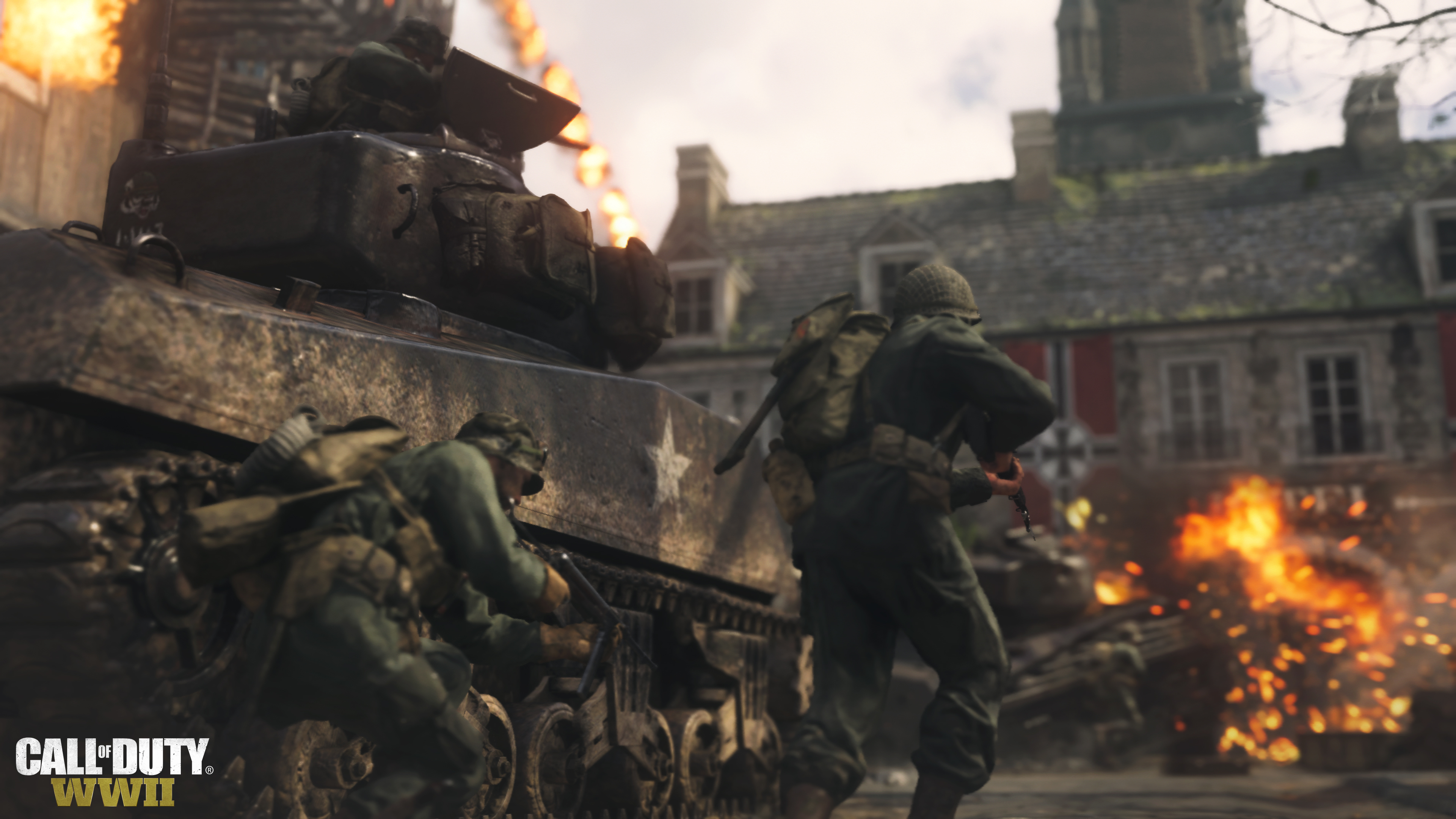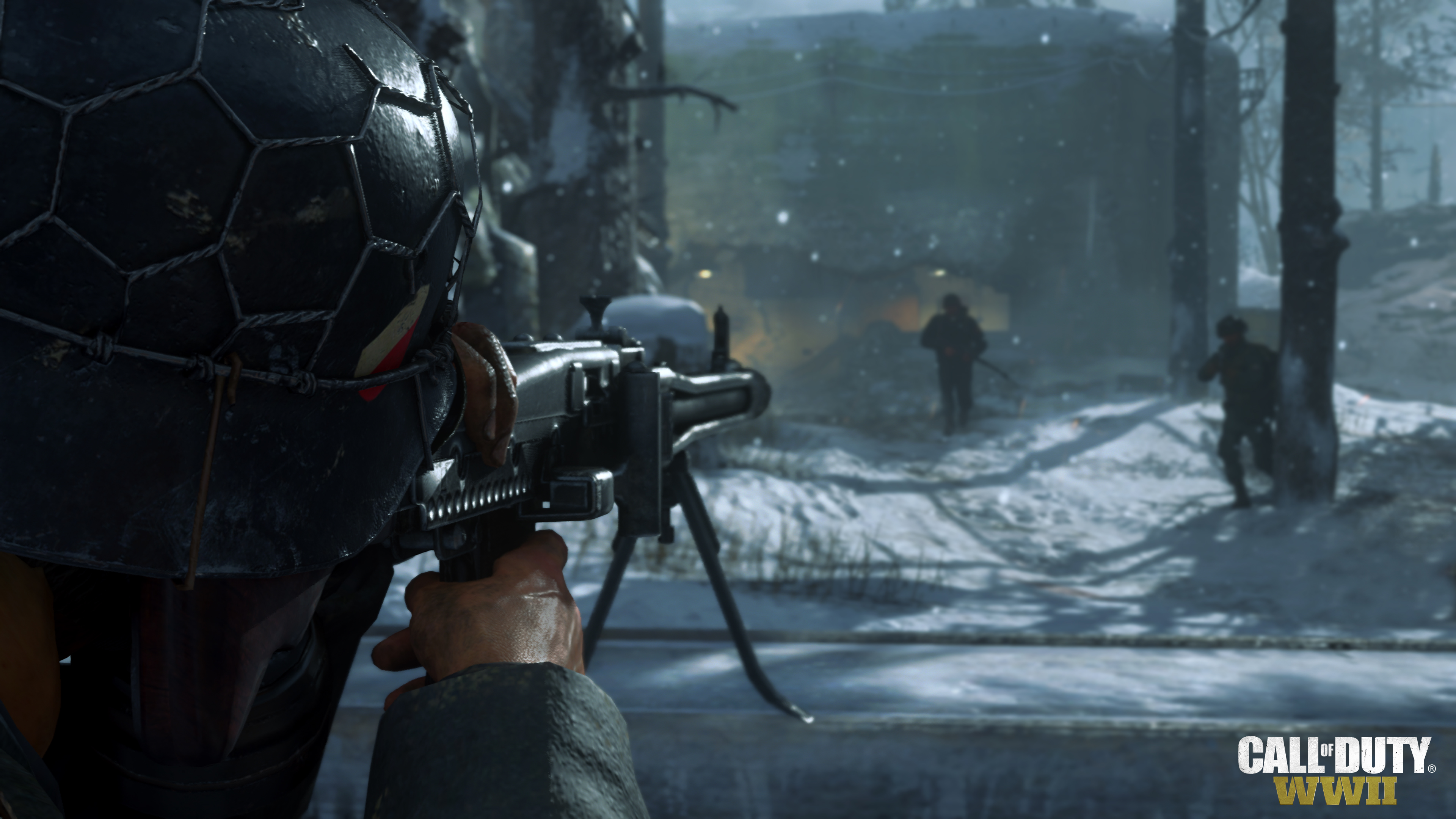COD:WWII multiplayer is familiar, but War Mode could be its secret weapon
Attack-and-defend is a welcome format for Call of Duty.

Call of Duty: WWII's multiplayer is, for the most part, Call of Duty as you've played it for the past 10 years. WWII guns like the M1 Garand, MP-40, and BAR have the snappy, easy-to-fire feel you'd expect from the series (and all are available on both sides). The maps (the three I played, anyway) corral you into lanes. It's 6v6 across every mode. Scorestreaks trigger care packages and aerial bonuses, like a fighter plane you pilot briefly to strafe the map.
One small but significant change is to sprinting: it isn't infinite. You can run at full speed for about four or five seconds before stopping. I've almost always enjoyed Call of Duty's athleticism—its speed as a neo-arena FPS, and maneuvers like dolphin diving, are underrated.
War Mode is the biggest and most promising addition.
WWII feels slower as a result, and slightly less like the full-speed, downhill meatgrinder that Ghosts and Black Ops 2 did for me. You're still bolting around corners into quickdraw situations against an enemy who's doing the same, racing to put each other into iron sights to win the fight, but you're aware when your sprint is on cooldown, and you feel a little vulnerable. And though WWII singleplayer is doing away with regenerating health (in favor of health kits), multiplayer retains auto-regen as a mechanic, which suits the compressed maps and quick respawns.
Other than that major movement tweak, War Mode is the biggest and most promising addition. The multi-part attack-and-defend format is welcome in Call of Duty if only because it brings a narrative slant, demphasizing individual score and K:D in favor of playing the objective.
The bridge builds in realtime as players fill a progress bar, with boards and brick swinging into place from thin air to arch across the gap.
On attack, my team first had to secure a small manor surrounded by a few farm buildings and hedges, effectively a capture point we had to push the Axis players off of. After that we came to my favorite part of the map, a broken bridge overlooked by some two-story apartments where snipers or machineguns could set up. This is was a focused flashpoint on par with CoD 4’s Shipment map: both teams faced each other down with no real opportunities for flanking.
Posting up above the bridge, I was able to chain together six or seven snipes with the Kar98k. Each kill made room for someone on my team to move forward to the destroyed bridge and add to the construction progress by occupying the dangerous area at the edge. The bridge builds in realtime as players fill a progress bar (progress is retained, even if players die), with boards and brick swinging into place from thin air to arch across the gap. Building the bridge meant putting yourself in the most vulnerable position on the map, and the smoke grenades of Armored Division players (the soldier class that emphasizes machineguns and related passive abilities) came in handy to protect our builders.

With the bridge built, the Axis were forced to retreat—a "Leave the area!" message pops up on your screen if you're alive when the attackers complete the objective. An Allied tank sprung to life, operating just like a payload in Team Fortress 2 or Overwatch. Standing near the tank, or operating its mounted MG, advanced it further up the road on its preset track. When the tank reached the next objective, an ammo depot, it stopped in the street, creating a big piece of cover (and a static MG) that our team used to cover our move into the depot.
The biggest gaming news, reviews and hardware deals
Keep up to date with the most important stories and the best deals, as picked by the PC Gamer team.
Completing War Mode's grab-bag of objective types, we had to plant a bomb on the ammo depot, then protect it from Axis defenders. The map layout of this area also differed from the previous two in a way I liked—it had two major bottlenecks, created by the walls of sandbags surrounding the depot. Grenades rained in from all directions, but not an absurd number—only the SMG-favored Divisions carried multiple grenades, from what I saw.
War mode is essentially a smorgasbord of COD modes. It produced more chatter than the more conventional, less exciting rounds of TDM and domination that we played, and the hyper-focused layout of the War map made it all but impossible to ignore the objective and still contribute. There was simply nowhere to wander off.

I love that this is a move away from the long-standing circular nature of COD's multiplayer maps.
The only downside of that compressed structure means that the map setting feels a little unnatural and welded together—don't expect the sprawling spectacle of something like Battlefield 1's Sinai Desert. But I love that this is a move away from the long-standing circular nature of COD's multiplayer maps, where over the years I've often felt like a well-armed rat in a maze. Refreshingly, War is linear and it promotes team play.
As for key technical details about multiplayer on PC, developer Sledgehammer told me that we shouldn't expect content differences between platforms (the new, 48-player social area called Headquarters will appear on PC too, for example). Dedicated servers are guaranteed. Sledgehammer couldn't clarify exactly which graphics settings will be available, only that the expected set of options will be there. The multiplayer designer I spoke to was unsure what anti-cheat solution is being used—expect us to track down these details between now and November.

Evan's a hardcore FPS enthusiast who joined PC Gamer in 2008. After an era spent publishing reviews, news, and cover features, he now oversees editorial operations for PC Gamer worldwide, including setting policy, training, and editing stories written by the wider team. His most-played FPSes are CS:GO, Team Fortress 2, Team Fortress Classic, Rainbow Six Siege, and Arma 2. His first multiplayer FPS was Quake 2, played on serial LAN in his uncle's basement, the ideal conditions for instilling a lifelong fondness for fragging. Evan also leads production of the PC Gaming Show, the annual E3 showcase event dedicated to PC gaming.

